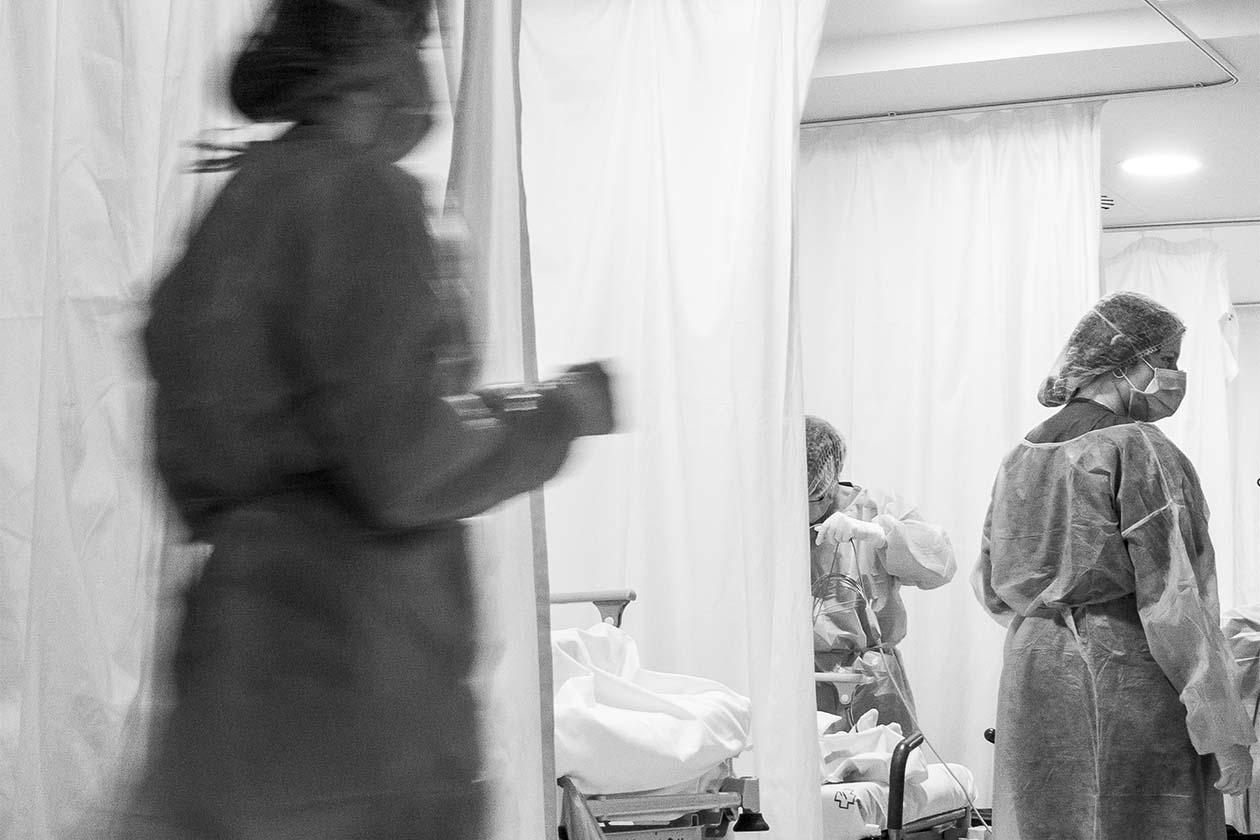
April 6, 2022
The Omicron COVID-19 variant marked the fifth major spike in COVID-19 hospitalizations. At its peak, over 150,000 people in the US were hospitalized with COVID-19 and about 17 percent of those patients were in an intensive care unit. Despite the extensive availability of COVID-19 vaccines, this was a higher level of hospitalizations than the previous peak in January 2022, and the peak of the Delta wave in September 2021. Whether an individual hospital saw a large increase in patients from the Omicron wave was largely determined by the characteristics of the surrounding population, including the prevalence of vaccinations and the climate. On January 20, 2022, at the height of the Omicron wave, six mostly cold weather states including Maryland, Rhode Island, Massachusetts, Pennsylvania, Minnesota, and Washington reported hospital capacities at over 85 percent. Only five states reported utilization rates under 70 percent including Missouri, South Dakota, Kansas, Utah, and Wyoming.
These differences in ICU bed occupancy reflect the continued importance of geography in how hospitals respond to the COVID-19 pandemic. The number of admissions to a hospital is largely driven by the characteristics of the surrounding area, including COVID-19 transmission risk factors, such as local work places, crowded housing, population density, age of the population, and other social determinants of health, as well as local COVID-19 containment rules and regulations.
This most recent spike in hospitalizations and deaths unfolded despite the extensive availability of highly effective COVID-19 vaccines and was predominantly driven by unvaccinated individuals and the more contagious and infectious Delta and Omicron variants. In September, 55 percent of the US population was fully vaccinated but that rate ranged from a high of 79.5 percent of Connecticut residents over 18 to a low of 48.2 percent of West Virginia residents over 18. Differences in vaccine take-up rates across the country added another layer of geographic risk factors to hospital admissions.
In order to understand the importance of geography in COVID-19 hospitalizations in New York, we examine over a year (February 2020–April 2021) of COVID-19 patient admittance data for the three State University of New York (SUNY) hospitals: University Hospital at Downstate (UHD) located in Brooklyn, Upstate University Hospital (Upstate) located in Syracuse, and Stony Brook University Hospital (Stony Brook) located on Long Island. These hospitals differ substantially in their geography and the patients they serve and together provide valuable insight into how the COVID-19 pandemic evolved in New York and how New Yorkers of different ages, races, and ethnicities were affected.